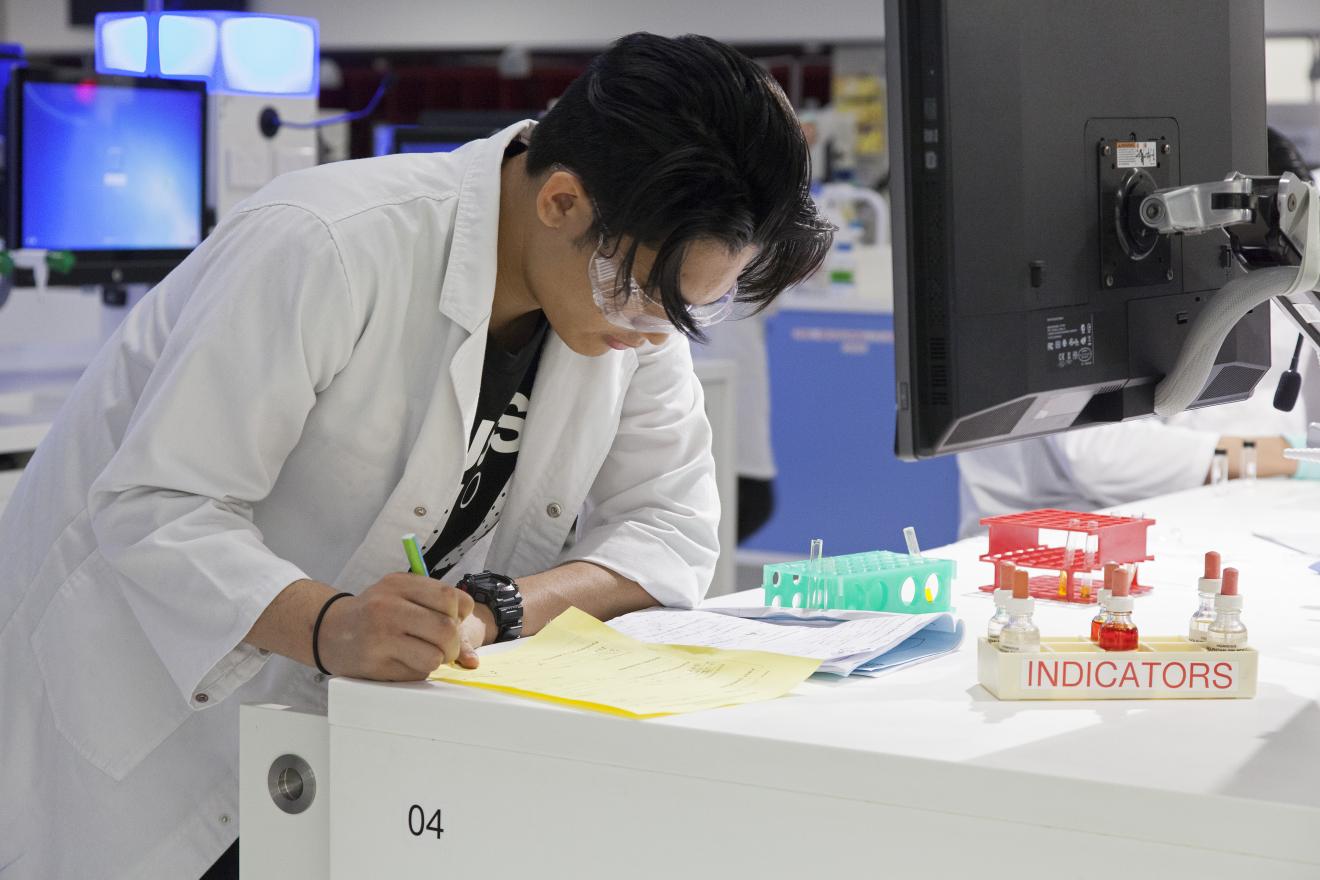
Keywords: first year subject, screencast, Socrative.
Faculty: Science
Number of students enrolled (Autumn session): 650
This is a first year, core subject for the life sciences taught across medical, molecular and environmental sciences. It runs in Autumn session with around 650 students, and Spring session with approximately 250 students.
What's happening?
All learning resources are made available to students in Canvas at least a month prior to commencing the session. After the session begins, the lecturer sends weekly emails to students to prompt engagement with the study material, such as suggesting that students look at the online resources, make notes and come to class to resolve any questions they may have.
Making the traditional lecture interactive
Over a two hour class, the first 20 minutes are spent on a traditional lecture format in which the lecturer uses a brief summary to relate to the key points of the material from the pre-class activities (e.g. online video lectures). Students then work in groups responding to questions for 30 minutes. The second half of the class follows a similar structure, with a 20 minute lecture on subject content summarising key points in a particular topic, with another 30 minutes of group work and questions.
Using Socrative for group work
Socrative is a classroom app used to engage students and enable participation from all members of the class. Students work together in small groups, discussing specific questions. These questions might be projected on the screen, or students may use Socrative as an online game. Students share their responses with their peers, and the whole class. Blair will then discuss their misconceptions.
Screencasts
Explain Everything is an app for iPads, which enables the lecturer to write on a slide projected on the screen and at the same time, it captures and records what is being written on the slide as a video. These screencasts are edited as 10 minutes long videos, and shared with students as online resources.
Students are provided with basic notes prepared by Blair, and they can also have access to audio recording of the lecturer. They are encouraged to expand on the notes provided.
Online Questions
Over a hundred questions are available online as resources for students, which they can use to work at home at their own pace. Students can then contact lecturer with questions.
Why do we think it's successful?
Reducing barriers to participation for first year students
As these are first year students, they may at times find it hard to yell out answers in front of a large class. Yet, it is important to encourage participation as the lecturer needs the feedback about student understanding and/or misunderstanding in a given topic. The lecturer has successfully addressed this issue by organising for students to work in small groups and then offer their responses through Socrative. In this way, students have a protected way of sharing their thoughts with peers, and also share their responses more generally with the whole class. She then collects the feedback about student understandings, and discusses misconceptions or reviews some concepts, based on the feedback from Socrative.
Physical learning spaces & collaboration
In the lecturer's experience, teaching in large lecture theatres didn’t seem very conducive to collaborative activities involving large groups of students. After many trials, she noticed that when students were asked to form large groups of, for example, eight students, they would usually form a group in a straight line, with people in the same row seating side by side. Participation and collaboration was difficult due to the physical organisation of seating arrangements. This was far from ideal, and often students seated at the far end of the row would struggle to participate. Blair learned that activities involving smaller groups – 2 or 3 students – are easier to set up, as students turn to speak to people in their immediate area. Participation and collaboration are also more effective as they can hear and speak to one another.
The importance of organising groups quickly
The lecturer has tried many ways of arranging students into groups, carefully thinking how to add an element of fun. For example, she brought playing cards and asked students to form groups of three, based on the suits of the card they were given. She also tried asking students to find someone that used the same train line or lived close by. In those activities students needed to stand up, walk around and speak to each other – or check their cards. Although these activities added an element of fun, the lecturer realised that it was time-intensive set them up. Her advice now is to just ask students to form groups of 3 with peers around them.
Explaining the reasons behind the learning design
The lecturer believes it is important that students need to understand the reasons for what they are doing (e.g. collaborative work, questions). She contextualises her learning and teaching practices by explaining to students about practices in the job market, what employers ask for, how engaging in active learning practices helps in learning, and thinking as scientists.
Photo credit: Andrew Worssam

